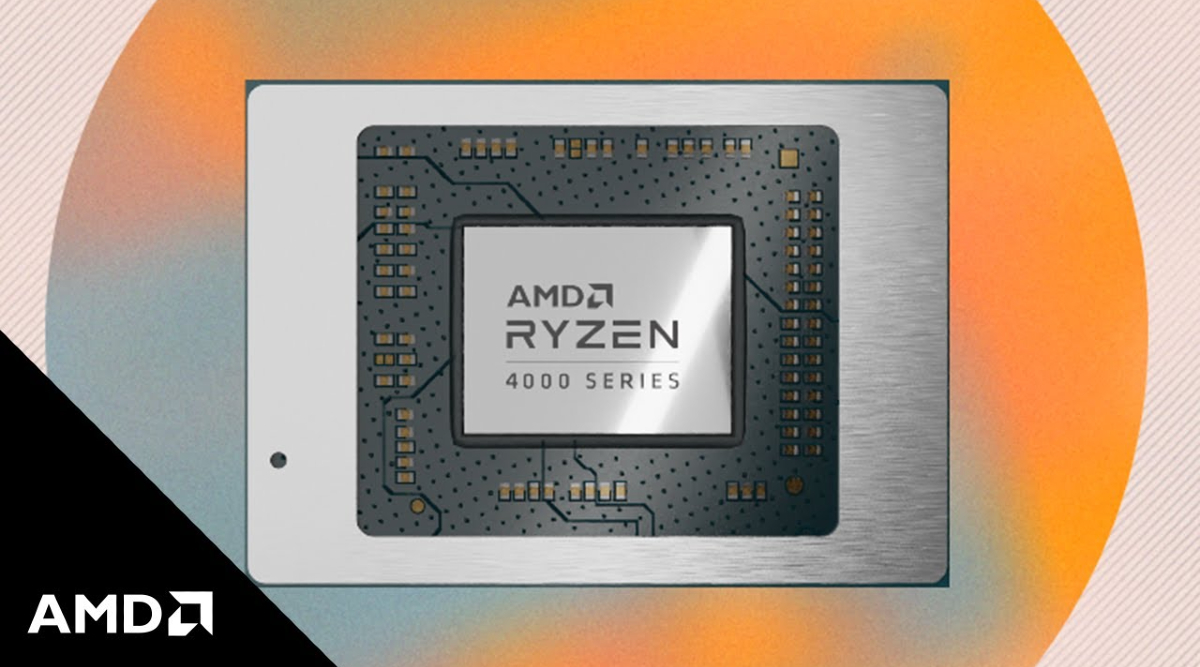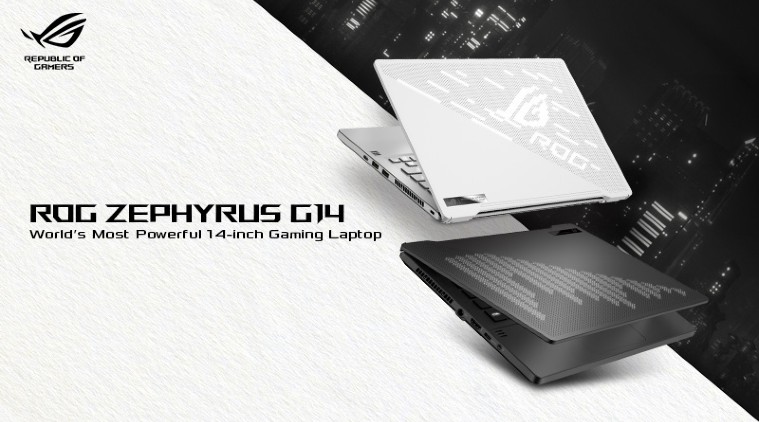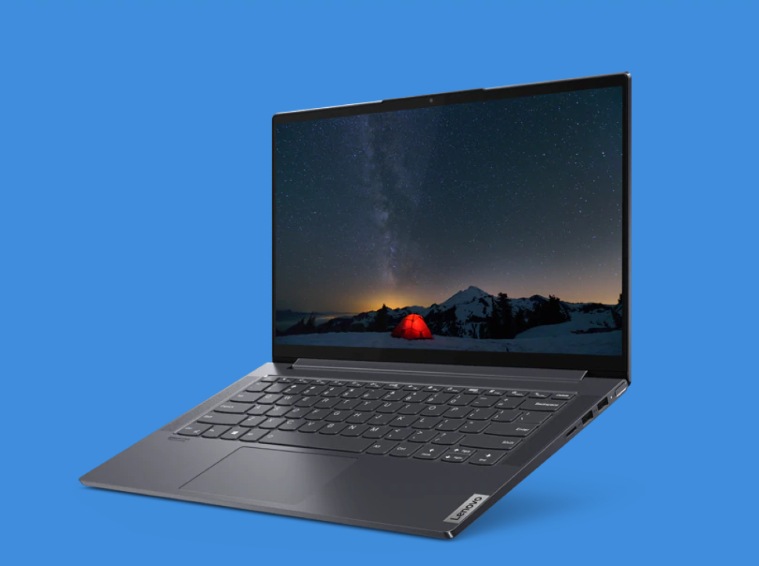 AMD has been chipping away at Intel's market share in the laptop and desktop CPU market.
AMD has been chipping away at Intel's market share in the laptop and desktop CPU market.After having played catch up for years, Advanced Micro Devices, better known as AMD, now thinks it is ready to power your next computer, be that an ultra-portable device powered by its new Ryzen 4000 mobile processors or a top-end gaming laptop. This confidence AMD has in its 7-nanometer chips should worry Intel, which recently debuted it’s latest 11th Gen processors based on a 10-nanometer process.
“When I see what they [Intel] are trying to do, I think they’ve got a different vision for wanting to push power higher… and I am a little concerned what that means for the battery life,” Scott Stankard, Senior Product Manager at AMD told indianexpress.com over a phone call.
“At this moment, the Ryzen 4000 series is the best product in the market. It’s the only place where you can get eight cores and 16 threads, you can get high-performance graphics, you can get great battery life all in a single solution. And, frankly, I didn’t see anything in the announcement that fundamentally changed that.”
Intel, AMD’s biggest rival in the laptop and desktop CPU space, touts its 11th-generation Core processors will bring a big leap in performance and battery life to thin and light laptops this fall. However, Intel is yet to announce more powerful H-series versions of Tiger Lake chips, designed for gaming laptops and notebooks made for content creation. Experts say the gaming laptop market is one of the fastest-growing laptop segments in many territories, including India.
‘Ryzen 4000 series is the best product in the market’
But AMD already has a lead over Intel with its Ryzen 4000 HS-Series processors — the Ryzen 9 4900HS, the Ryzen 7 4800HS and the Ryzen 4600HS — which bring high-level performance to thinner laptops made for gaming and content creation.
“The impact, as we saw with the launch of our Ryzen 4000 is just the ability to do things and form factors that we couldn’t do before,” Stankard said. “It’s bringing what in the past had been a gaming laptop performance into an ultra-thin form factor. That’s something we started with AMD and I see the competition echoing that sort of lineup.”
Stankard called AMD’s Ryzen 4000 HS-Series CPUs “a fundamental change” as the new processors brought the same level of performance one would expect in a desktop processor into a gaming laptop. “I think it makes laptops exciting in a way that they haven’t been in a long time,” he said.
PC’s have become more important, we are not done innovating: Intel India MD
“I see a lot of the value there for it in content creation, Stankard said while doubling down the core count. “Some content creation applications are more cores focused and they can make full use of all the cores. And then other applications are more graphics sensitive, and they can make use of the high-performance graphics. The Ryzen 4000 is the only place where you can get that right,” he said.
Intel and AMD- the top CPU makers for PCs and laptops – have been at loggerheads over the market dominance for years. Some even call the battle between Intel and AMD ‘a quiet war’. But lately, AMD has been chipping away at Intel’s market share in the laptop and desktop CPU market. Intel recently announced that its first “7-nanometer” chips are delayed and won’t arrive until at least 2022. Meanwhile, AMD already ships its 7nm chips inside laptops.
 Asus ROG Zephyrus G14.
Asus ROG Zephyrus G14.
Stankard, an AMD veteran who has been with the company for over 20 years, says the Ryzen 4000 mobile CPUs will bring innovation back in the laptop market that had become boring in the past. “Quite frankly, it’s a market that had been a little bit stale in the past. But what we saw when we launched our Ryzen mobile 4000 series was just a lot of excitement around AMD being able to bring eight cores to an ultra-thin laptop,” he said.
Stankard cited the example of the Asus ROG Zephyrus G14, an impressively thin 14-inch gaming laptop powered by the eight-core Ryzen 9 4900HS processor and Nvidia GeForce RTX 2060 Max-Q GPU. “When people saw that [Zephyrus G14] their minds were blown because of the performance that we could put into such a small laptop,” says Stankard. “To be honest, it’s both the compute performance but also on the graphics side because of the power efficiency of the Ryzen 4000 and that allowed Asus to put a graphics card in that really thin laptop that they just were unable to do with the competition because the competition required more power for their own CPU. I think that’s the kind of innovation that our technology or architecture or process lead enables, and, is sort of at the heart of some of the innovation.”
‘We’re working closely with OEMs’
One of the things that made Intel the dominant force in the PC market is its deep relationship with OEMs. It is a known fact that Intel plays a crucial role in designing laptops with its partners and this strategy has worked wonders for the semiconductor giant. This is one reason why there are more laptops available with Intel core processors over AMD’s Ryzen CPUs.
“I’d say our partnerships have grown even closer over the last few years,” says Stankard. “What we are seeing is a lot of desire from the OEMs to work more closely with us. They want to take some other great high-end products and build that around an AMD processor now and they want to explore innovative ideas with AMD taking advantage of what we can bring and they want to fill out their portfolios overall with even more AMD products,” he explains.
Stankard believes OEMs are willing to work even more closely with AMD is also because the company is offering a “level of performance” that the competition was “unwilling or unable to do.”
The rate at which AMD’s market share has grown in the notebook segment — Stankard claims a 19.9 per cent market share in the second quarter — has also created a lot of desire from the OEMs to work closely with the chipmaker. “We’re actually working with them [OEMs] way in advance of production, working through what are the goals for the programmes, how do we need to design them. We are earlier than ever doing co-validation and testing with them,” Stankard said.
He said even after the product is launched, AMD constantly tests these against any of the latest OS revisions and make sure that the product continues to stay as good as it was when we launched.
‘Focus on premium segment increased’
“I think in the premium space, we’ve more or less doubled our growth just in the first half of this year,” he said, adding that you can find AMD chips in quite a number of premium laptops such as Lenovo Ideapad Slim 7 and Acer Swift 3. “Certainly, there are a handful of these platforms that we’re not in yet and we’ll continue to talk with the OEMs about opportunities there.”
When Microsoft launched its Surface Laptop 3 last year, it made the notebook available in two different sizes and two different processors. The 13-inch model had an Intel processor and the larger 15-inch model came with an all-new processor co-developed with AMD. How does this strategy work in AMD favour?
“I’ve got the world’s best product and I want to see it on every laptop. But I know from the OEMs perspective, they want to see how successful they are with AMD and then they’ll continue to build more laptops around that. Everybody would love to be able to offer multiple options in every market and every configuration, but that gets expensive in terms of inventory and SKU management. So the OEMs have tough decisions to make in that regard.”
 Lenovo Ideapad Slim 7.
Lenovo Ideapad Slim 7.
‘AMD eyes the commercial segment’
AMD may have been enjoying great strides over Intel of late, but Intel still has a lead over AMD in the lucrative enterprise market. “I just want to clarify that AMD is in Elitebook [HP] today, and AMD is in ThinkPad [Lenovo]. I think we’re seeing some good progress right now in the commercial space,” he said.
Stankard says the commercial market behaves differently from the consumer market. It’s not just the performance that matters, but also a lot depends on reputation, reliability and stability. “I think that the large enterprise buyers wanted to see in order to shift to AMD, they just were uncertain and they were unfamiliar. And I think they’re seeing that now.”
‘Computers that take you through your day’: Intel takes questions on 11th Gen Core chips and devices
‘AMD wants to focus on high-performance computing’
Trade pundits expect a lot of changes in the PC market over the coming years. Qualcomm’s vision of laptops are more of smartphones – always connected to the internet and lasting all day on a single charge. Apple, too, is making progress in that direction with its ARM-based Macs that will arrive this year. But are Qualcomm’s 8cx Gen 2 chip and Apple’s ARM silicon so powerful to replace Intel and AMD in mainstream laptops?
“I’ll call it lower performance… If you hold that up against the Ryzen 4000 mobile series, or what AMD is doing with our Zen 2 architecture, and going forward, our focus is on high-performance computing.”
Stankard further added that he doesn’t expect AMD’s strategy will “fundamentally change” based on what its competitors are doing. “There have been some attempts with ARM-based products in the market in the past and they haven’t had a whole lot of success…maybe sometimes soon that will happen. But it doesn’t necessarily change our strategy, because our focus is really on the high-performance part of the market.”
📣 The Indian Express is now on Telegram. Click here to join our channel (@indianexpress) and stay updated with the latest headlines
For all the latest Technology News, download Indian Express App.
